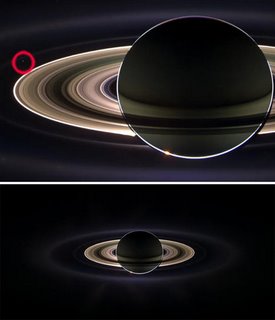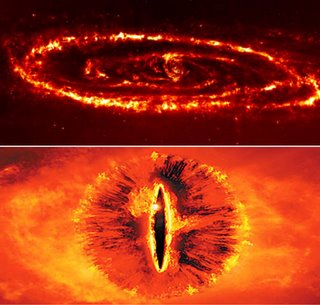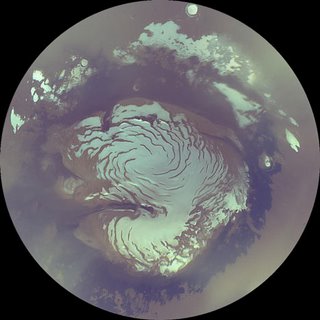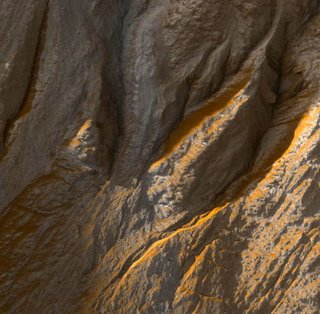Here are some beautiful pictures of space published in the Daily Mail, UK 03.11.06
Saturn
The image is only the second ever taken of our world from deep space. The first, captured by the Voyager spacecraft in 1990, stunned many people, including the famous astronomer Carl Sagan - who called our seemingly miniscule planet a "pale blue dot" and "the only home we've ever known".
The incredible image was taken by the Cassini spacecraft, which arrived at Saturn in 2004 after a seven-year journey.
It is now halfway through its four-year mission, and has given scientists their most intimate glimpse of the ringed planet.
In January 2005, it produced incredible pictures as it released the Huygens probe, which parachuted through the atmosphere of Titan (Saturn's largest moon) to land on its minus 300 degrees Fahrenheit surface, where methane rain flows down hills and rivers into methane lakes.
The new image was created by combining a total of 165 images taken by Cassini's wide-angle camera over nearly three hours on 15 September this year.
The latest photograph of distant galaxy Andromeda
The infrared image, taken using NASA's Spitzer Space Telescope, reveals a dust ring deep within the galaxy which has never been seen before.
Scientists believe it was formed 210million years ago when another galaxy, known as M32, collided with Andromeda. The collision has led scientists to reassess their belief that the galaxy is a perfect example of galactic tranquillity where not much happens.
Andromeda (the top picture), which is named after a mythological princess and is shrouded by a haze of cosmic dust, is 1.5 times bigger than our own Milky Way and 2.5 million light years away. Scientists predict the two galaxies will collide in about 3 billion years, with neither expected to survive.
Mars
This is the amazing picture that shows the effects on Mars of 'dynamic climate changes'.
The image, taken during a test of the NASA's Mars Reconnaissance Orbiter's instruments, is the clearest yet of the Red Planet and shows clay-rich areas that could have supported life.
Scientists were also able to see frost, and layered deposits of ice and dirt at the polar ice cap which indicate "dynamic climate changes" as recently as 100,000 years ago, scientist Scott Murchie said.
This latest Mars mission will also determine whether there is enough water on the planet to support a manned mission.
NASA's latest mission to Mars has revealed the Red Planet's "dynamic climate changes" and clay-rich areas that could have supported life.
"We are seeing a new Mars," project scientist Richard Zurek said at a news conference. "We are seeing information comparable to, or better than, what you could see flying over Earth in a commercial airliner."
Launched in August 2005, the orbiter dropped into a low orbit around Mars last month to map the planet's subsurface minerals, monitor its atmosphere and look for evidence of enough subsurface ice or water to process into oxygen, concrete and rocket fuel for manned exploration.

If you want to see more check out the Daily Mail website.
Monday, November 06, 2006
Earth - The View From Deep Space
Subscribe to:
Post Comments (Atom)





No comments:
Post a Comment